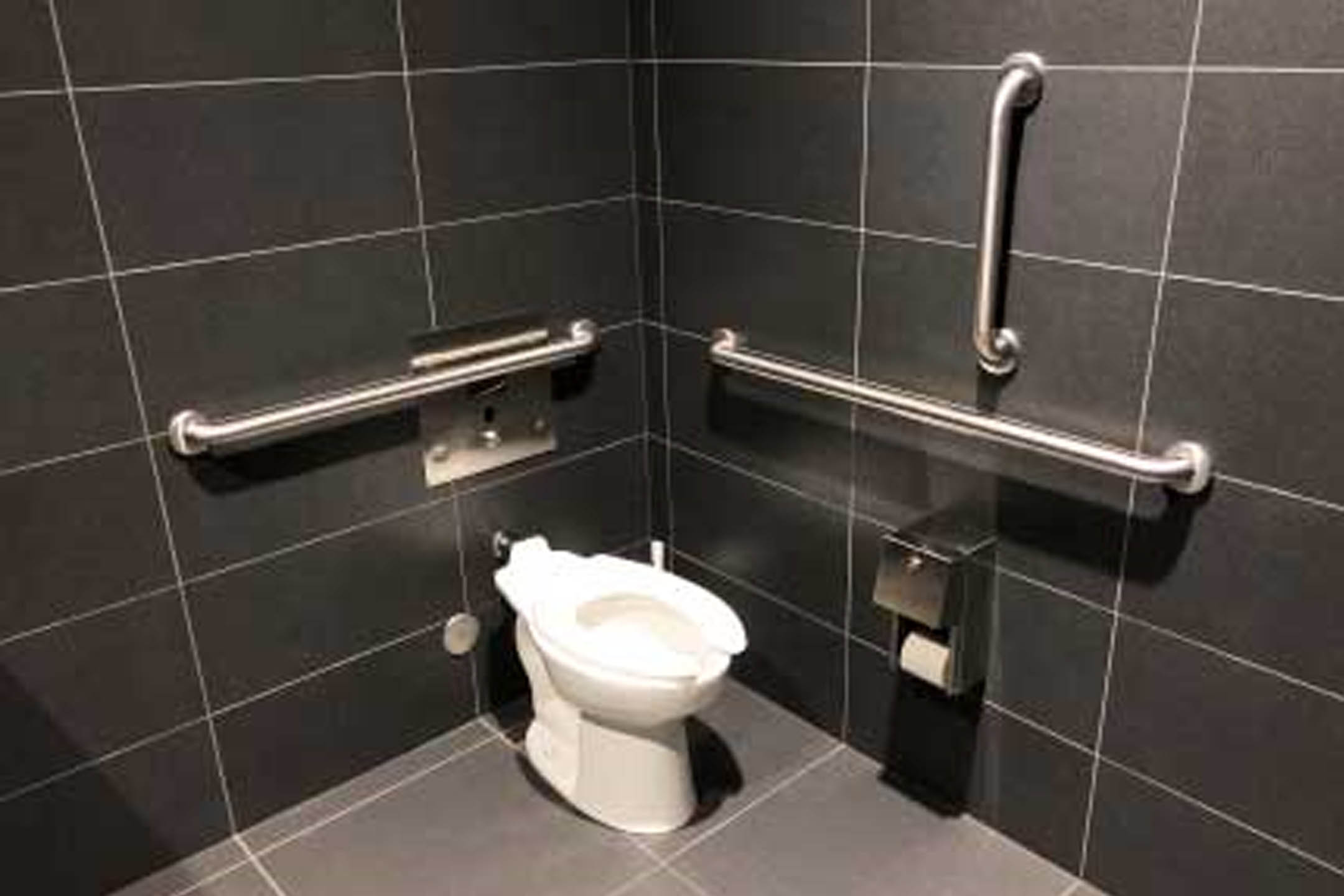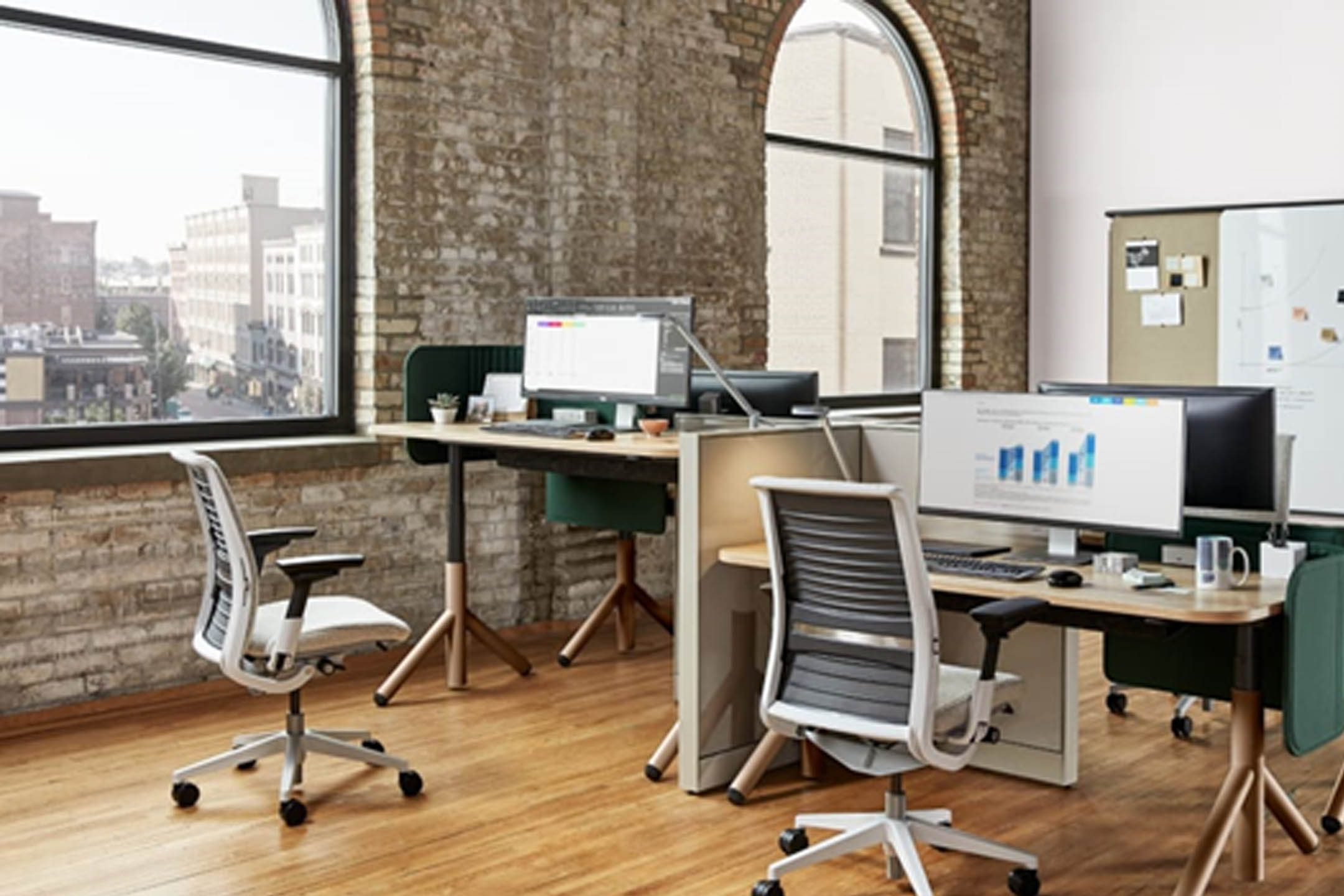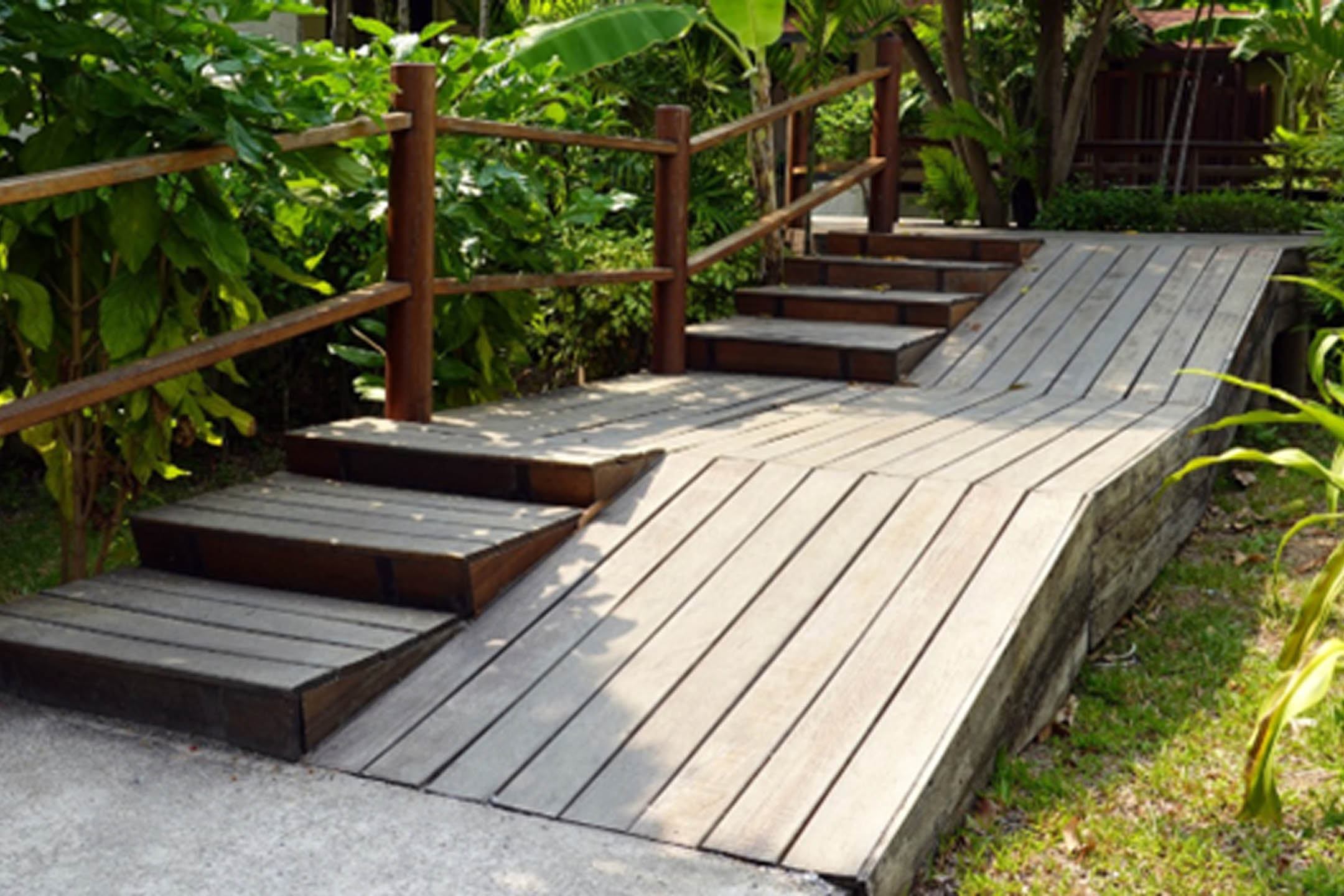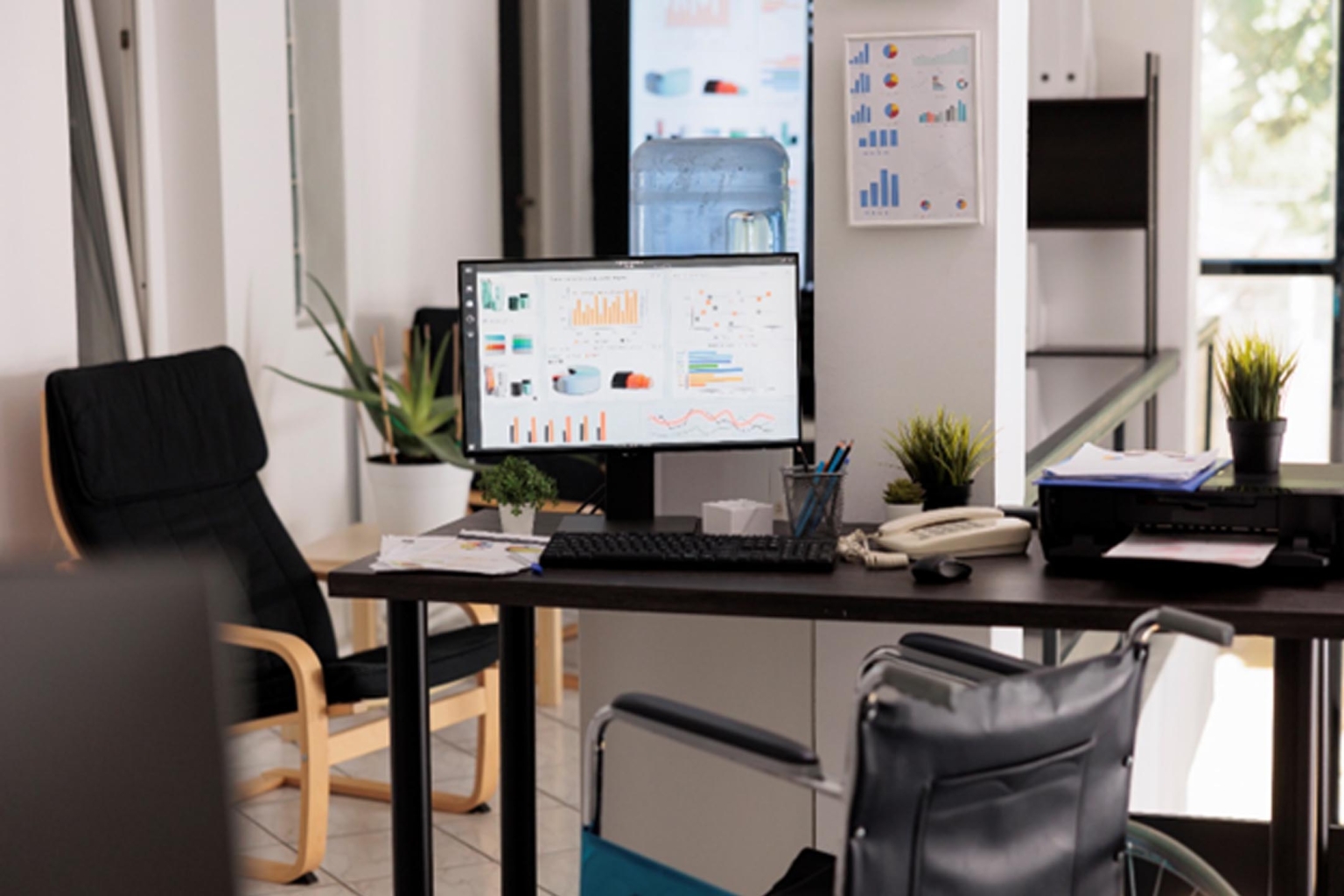Introduction to Accessible Design
Creating inclusive environments in commercial design is crucial for supporting individuals with disabilities. Public spaces and office spaces must be designed to accommodate the diverse needs of all users, ensuring that everyone can access and use the facilities comfortably. Canadian regulations, such as the Accessibility for Ontarians with Disabilities Act (AODA), emphasize the importance of creating inclusive environments through thoughtful design and furniture choices.
People with disabilities often face significant barriers in public spaces and office spaces due to inadequate design approaches. By focusing on the principles of universal design, businesses can create an accessible workplace that supports all employees and visitors. This includes the integration of adaptive furniture, ergonomic seating, and assistive devices to cater to various needs. Additionally, healthcare facilities must prioritize accessibility to ensure that patients receive the care they need without facing unnecessary obstacles. The commitment to inclusive design not only complies with legal requirements but also fosters a more equitable and supportive environment for everyone.
Understanding Accessibility in Commercial Spaces
Accessibility in commercial design means creating spaces that everyone can use, regardless of their abilities. Furniture plays a key role in enhancing or hindering this accessibility. Commercial interiors must be designed to support inclusive spaces, ensuring that both public and private sectors meet the needs of all individuals. This includes considering physical disabilities, cognitive disabilities, and the use of mobility devices. Furniture can either facilitate accessibility or create barriers, making it essential to choose pieces that contribute to an accessible space.
To address these challenges, design companies are increasingly adopting inclusive design principles that consider the needs of people with disabilities from the outset. Key aspects of these design approaches include ensuring ample space for movement, selecting height-adjustable and adaptable furniture, and incorporating features like grab bars and clear signage.
By prioritizing these elements, businesses can create commercial interiors that are not only compliant with regulations but also welcoming and functional for everyone. The collaboration between design companies and stakeholders in various industries is vital in driving the adoption of these best practices and enhancing overall accessibility.

Canadian Regulations and Standards
Canada has robust accessibility standards, such as the AODA, which mandate the inclusion of accessible features in public and private spaces. These regulations influence furniture selection and placement in commercial settings, ensuring that features like adjustable height desks, grab bars, and ample maneuvering space are integrated into the design. Compliance with these standards is not only a legal obligation but also a moral imperative to support individuals with disabilities.
The Canadian Accessibility Standards, which complement the AODA, provide detailed guidelines on creating accessible spaces. These standards cover a wide range of elements, from pathway clearances to surface heights, ensuring that every aspect of a commercial interior is designed with accessibility in mind.
Designing for Accessibility: Best Practices
Universal design principles are essential for creating accessible environments. When choosing furniture for accessibility, consider the height, maneuverability, and adjustability of each piece. Pathway clearances and surface heights are essential factors. For instance, adjustable furniture such as height adjustable desks and ergonomic furniture can accommodate a wide range of users, creating a more comfortable environment. Ensuring ample space for mobility devices and assistive devices is also crucial.
Key considerations for inclusive design principles in furniture include:
- Height: Furniture should be at an appropriate height for both standing and seated individuals, ensuring ease of use.
- Maneuverability: There should be enough space around furniture to allow for easy movement, particularly for those using wheelchairs or other mobility aids.
- Adjustability: Features such as height adjustable desks allow users to customize their environment to their needs, promoting comfort and accessibility.
Case Studies: Successful Accessible Design Implementations in Canada
Several Canadian businesses have successfully implemented inclusive design principles. For instance, Shopify, a leading tech company in Toronto, redesigned their office layouts to include height adjustable desks and ergonomic furniture, resulting in increased employee satisfaction and productivity. In Vancouver, Blenz Coffee incorporated universal design principles by adding grab bars and creating ample space for wheelchair users, significantly enhancing customer experience and accessibility.
Moreover, the St. Michael’s Hospital in Toronto redesigned its waiting areas with adjustable furniture and clear pathways, significantly improving patient comfort and accessibility. The facility received positive feedback from patients and staff, highlighting the impact of thoughtful design on user experience. The Canucks Autism Network in Vancouver is another example where design approaches have been tailored to support individuals with autism, providing sensory-friendly commercial interiors.
These success stories demonstrate the importance of adaptive designs and the role of design companies in executing these changes. By prioritizing key aspects of accessibility, these businesses have not only complied with regulations but also created inclusive spaces that benefit all users.

Innovative Accessible Furniture Solutions
The future of accessible furniture design is promising, with innovations catering to a range of disabilities. Design companies are developing adjustable furniture and ergonomic seating solutions that adapt to users’ needs. Technological advancements such as adjustable desks with electronic controls and smart furniture that integrates assistive devices are becoming more prevalent. Canadian companies like Teknion and Herman Miller are leading the way in creating inclusive environments with their adaptive designs.
Innovative solutions include:
- Adjustable desks that can be easily modified for height, promoting comfort and accessibility for all users.
- Ergonomic seating designed to support various body types and reduce strain, essential for creating a comfortable environment.
- Smart furniture that incorporates technology to assist users, such as motorized adjustments and integrated support for assistive devices.
- Voice-activated furniture that allows users to control adjustments using voice commands, providing hands-free convenience.
- Modular furniture systems that can be easily reconfigured to suit different needs and spaces, promoting flexibility in commercial interiors.
- Height-adjustable countertops and workstations, ensuring accessibility in kitchens, reception areas, and workspaces.
- Interactive seating solutions that provide sensory feedback and support for individuals with cognitive disabilities.
- Furniture with built-in charging ports and connectivity features to support the use of modern technology and mobility devices.
- Convertible furniture that can transform from one type of furniture to another, offering multifunctional use and space-saving benefits.
These innovative solutions reflect the ongoing commitment to inclusive design principles and the efforts to create accessible environments that cater to a wide range of users. By incorporating these advanced features, design companies are making significant strides in enhancing the accessibility and functionality of commercial interiors.
Challenges and Solutions
Implementing accessible designs in commercial settings can present challenges. Businesses often face constraints such as limited square foot and budget limitations. However, practical solutions exist, such as retrofitting existing spaces with adjustable furniture and ensuring clear pathways. Design companies can assist with design strategies that maximize space and functionality. Additionally, adopting universal design principles and focusing on key design aspects like natural lighting and bright lighting can enhance accessibility.
Common challenges and solutions include:
- Limited Space: Optimize the use of available space by selecting multifunctional and adjustable furniture that can adapt to various needs. For example, height-adjustable desks and modular seating arrangements can help make the most of confined areas. Implementing ample space for movement and maneuverability ensures an accessible workplace for all employees and visitors.
- Budget Constraints: Prioritize essential accessibility features and consider phased implementation to spread costs over time. Identify the most critical aspects of accessibility and address them first. Seeking grants or incentives for accessible design from local governments or organizations can also help alleviate financial burdens.
- Retrofitting Existing Spaces: Work with design companies to identify key areas for improvement and implement changes that have the most significant impact on accessibility. Simple adjustments like adding grab bars, widening doorways, and lowering countertops can make existing spaces more inclusive.
- Meeting Legal Obligations: Ensure compliance with Canadian regulations and standards, such as the Accessibility for Ontarians with Disabilities Act (AODA) and other Canadian Accessibility Standards. Regular audits and consultations with accessibility experts can help businesses stay up-to-date with legal requirements and avoid potential fines.
- Maintaining Aesthetic Appeal: Balancing functionality and aesthetic appeal can be challenging. Collaborate with designers to integrate accessibility features seamlessly into the overall design, ensuring that the commercial interiors remain attractive and welcoming.
- Employee Training and Awareness: Educate staff on the importance of accessibility and proper use of accessible furniture and spaces. Training programs can enhance awareness and ensure that employees are equipped to assist individuals with disabilities effectively.
- Technology Integration: Integrate technology to support accessibility, such as smart furniture with motorized adjustments and assistive devices. These innovations can enhance the usability of commercial spaces for all users.
- Future-Proofing Designs: Plan for future accessibility needs by incorporating flexible and adaptive design approaches. This includes using materials and designs that can be easily updated or modified to meet evolving standards and requirements.

By addressing these challenges with thoughtful and strategic solutions, businesses can create inclusive spaces that cater to the diverse needs of their clients, employees, and visitors. These efforts not only comply with legal requirements but also contribute to a more equitable and welcoming environment for everyone.
Conclusion
The shift towards inclusive design in commercial interiors is transforming the industry. By embracing universal design principles, utilizing high-quality materials, and committing to environmental responsibility, manufacturers can create products that not only meet consumer demands but also contribute to a greener future. As businesses and consumers continue to prioritize sustainability, the industry will evolve, paving the way for a more sustainable future in furniture manufacturing.
By focusing on accessibility, businesses can create inclusive workplaces that support all employees and customers, enhancing satisfaction and productivity. The adoption of inclusive design principles is not only a legal obligation but also an opportunity to lead by example in creating accessible environments that benefit everyone.
 +1 (905) 825 9665
+1 (905) 825 9665


